Are you ready to take your skiing skills to the next level? Whether you’re a beginner or an experienced skier, mastering the art of ski pole usage can make a remarkable difference in your performance on the slopes. But do you know the proper techniques and strategies for using ski poles effectively?
Using ski poles is not just about having an accessory in your hands. Ski poles are essential tools that provide stability, rhythm, and control, helping you navigate various terrains with confidence. But how do you harness the full potential of ski poles?
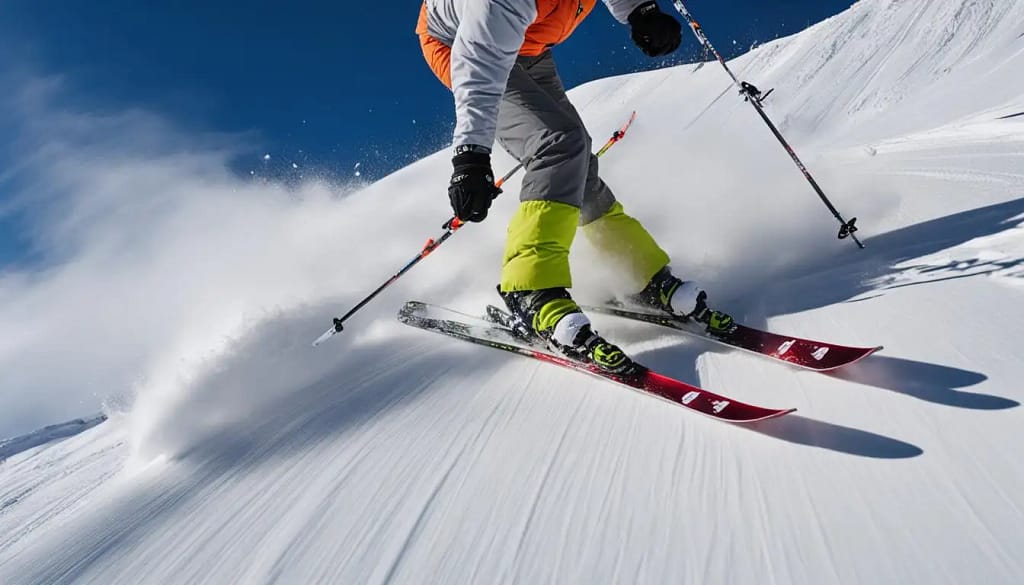
- Learn the importance of ski poles for balance, rhythm, and maneuverability.
- Understand how to choose the right size and type of ski poles for optimal performance.
- Discover the correct grip and placement of ski poles for effective technique.
- Master basic ski pole techniques for beginners and advanced techniques for experienced skiers.
- Adapt your ski pole technique to various terrains for improved skiing experience.
Table of Contents
Understanding the Role of Ski Poles in Skiing
Before we delve into the techniques, it’s essential to understand the numerous benefits of using ski poles. Ski poles are not just accessories; they play a vital role in enhancing your skiing experience. Let’s explore how ski poles contribute to balance, rhythm, and improved maneuverability on the slopes.
1. Balance:
Ski poles help you maintain a stable and centered position while skiing. By planting your poles firmly into the snow, you can distribute your weight evenly and avoid falling forward or backward. This improves your overall balance and prevents accidents on slippery terrain.
2. Rhythm:
Using ski poles establishes a natural rhythm as you glide down the slopes. The repetitive motions of pole planting and swinging create a consistent cadence, allowing you to maintain speed and rhythm throughout your descent. This rhythmic flow enhances your skiing technique and makes for a smoother, more enjoyable ride.
3. Improved Maneuverability:
Ski poles act as essential tools for maneuvering through various skiing conditions. By applying pressure on the poles and angling them appropriately, you can initiate turns, control speed, and navigate around obstacles with precision. This improved maneuverability gives you a greater sense of control and confidence on the slopes.
To get a visual understanding of the role ski poles play in skiing, take a look at the image below:
Now that we’ve established the benefits of ski pole usage, let’s move on to the next section, where we’ll guide you through choosing the right size and type of ski poles for your needs.
Choosing the Right Size and Type of Ski Poles
When it comes to skiing, selecting the appropriate size and type of ski poles is crucial for achieving optimal performance on the slopes. By investing some time in finding the right fit, you can enhance your balance, control, and overall skiing experience. Here, we’ll guide you through the factors to consider when choosing ski poles and how to ensure the perfect match for your skiing style and body proportions.
1. Determine the Correct Pole Length
One of the first considerations when selecting ski poles is finding the correct length. The ideal pole length depends on your height and skiing ability. A simple way to approximate the appropriate length is to stand upright and hold the poles upside down, gripping them just under the basket. Your elbows should be bent at a 90-degree angle. If your elbows are bent at less than 90 degrees, the poles are too long, and if they are more than 90 degrees, the poles are too short. It’s important to note that different skiing disciplines may require different pole lengths, so it’s best to consult with a knowledgeable professional or refer to manufacturer guidelines.
2. Consider the Type of Ski Poles
Ski poles come in different materials, such as aluminum and carbon fiber, each offering unique characteristics. Aluminum poles are durable, affordable, and suitable for most skiers, making them a popular choice for recreational use. Carbon fiber poles, on the other hand, are lightweight and provide excellent vibration dampening, making them ideal for advanced skiers or those seeking higher performance. Additionally, some ski poles come with adjustable lengths, allowing you to adapt them to different terrains or skiing styles. Consider your skill level, skiing preferences, and budget when deciding on the type of ski poles that will best suit your needs.
3. Take Your Skiing Style into Account
Your skiing style also plays a role in choosing the right ski poles. For alpine skiing, where poles are primarily used for balance and timing, standard ski poles with regular basket sizes are generally recommended. For off-piste skiing or skiing in powder, larger baskets are beneficial to prevent the poles from sinking too deep into the snow. On the other hand, if you’re into racing or ski touring, smaller and lighter baskets can provide better aerodynamics and minimize drag while skiing at higher speeds.
By factoring in your height, skiing ability, materials, and skiing style, you can make an informed decision when selecting ski poles that will enhance your performance and overall enjoyment on the slopes. Remember, the right ski poles are an essential tool for stability, rhythm, and control, enabling you to confidently master the art of skiing.
| Height Range | Pole Length (in cm) |
|---|---|
| Less than 5′ (152 cm) | 44-46 |
| 5′ – 5’3″ (152 – 160 cm) | 46-48 |
| 5’4″ – 5’7″ (161 – 170 cm) | 48-50 |
| 5’8″ – 5’11” (171 – 180 cm) | 50-52 |
| 6′ and above (181+ cm) | 52-54 |
Proper Grip and Placement of Ski Poles
To effectively use ski poles, it’s essential to have the correct grip and placement. This ensures proper stability, control, and power while skiing. In this section, we will discuss the different grips, hand positions, and the optimal placement of ski poles to enhance your technique.
Grips
Ski poles typically come with two common grip options: the traditional straight grip and the ergonomic contoured grip. The straight grip is a simple and straightforward design, while the contoured grip offers enhanced comfort and better hand alignment.
Pro Tip: When choosing a grip, consider your hand size and personal preference. Experiment with different grips to find the one that feels most comfortable and secure.
Hand Positions
When holding ski poles, it’s important to position your hands correctly for optimal performance. The most common hand positions include the traditional grip, thumb-on-top grip, and the strapless grip.
- Traditional Grip: Place your hand through the strap, placing your thumb on the top of the grip and wrapping your fingers around it. This grip provides stability and control.
- Thumb-on-Top Grip: Place your hand through the strap and rest your thumb on top of the grip. This grip allows for quick pole release and easy hand movement.
- Strapless Grip: Hold the pole grip without placing your hand through the strap. This grip provides maximum freedom of movement and is often used in more technical skiing.
Pro Tip: Experiment with different hand positions and find the grip that feels most natural and comfortable for you. Practice each hand position to develop muscle memory and enhance your overall control.
Placement
The proper placement of ski poles is crucial for efficient pole usage. Here are a few guidelines to follow:
- Length: When standing upright, the tip of the pole should be touching the ground. Adjust the length accordingly to fit your height and skiing style.
- Angle: Hold the poles at a slight angle, with the basket (the round disc at the bottom) facing backward. This allows for easier pole planting and better stability.
- Pole Planting: When making turns, plant your poles in the snow slightly ahead and to the side of your boot. This provides balance, stability, and helps with rhythm and timing.
Pro Tip: Practice pole planting and focus on syncing your pole usage with turns to improve your rhythm and control on the slopes.
Having a correct grip and placement of your ski poles is essential for maximizing your skiing experience. It allows for improved stability, control, and power during each turn. Take the time to experiment with different grips and hand positions, and practice proper pole placement to enhance your skiing technique.
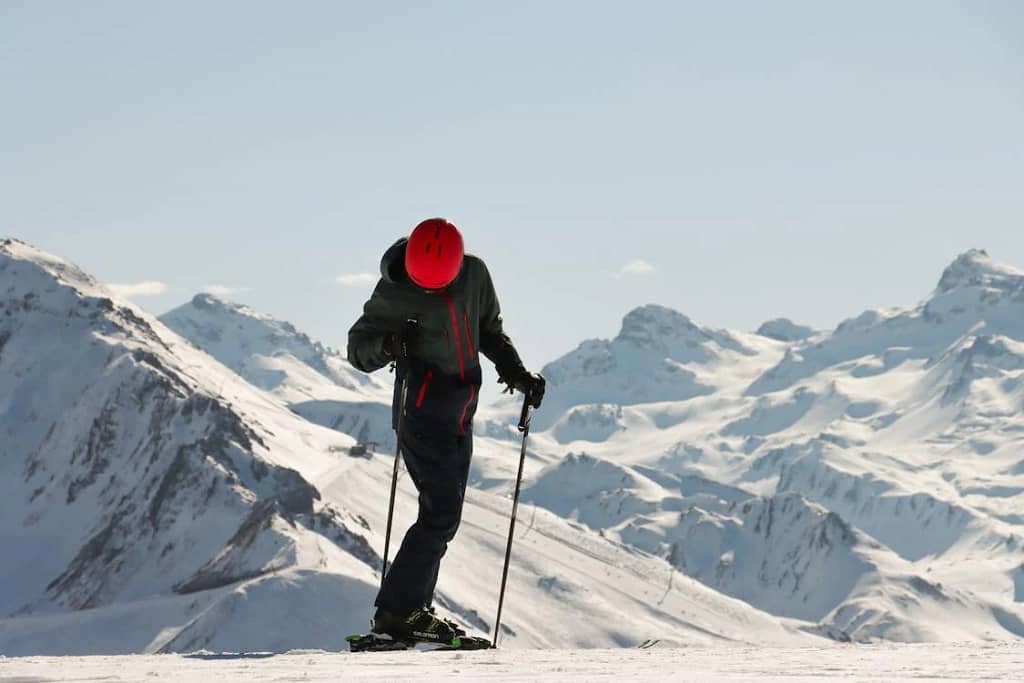
Basic Ski Pole Techniques for Beginners
If you’re new to skiing, learning the proper ski pole techniques is essential for getting started on the slopes. Mastering these fundamental techniques will help you initiate turns, maintain balance, and use your poles efficiently as a beginner skier.
Initiating Turns
When it comes to turning, ski poles play a crucial role in helping you initiate and control your movements. As you approach a turn, plant your poles firmly in the snow, slightly ahead of your body. This creates stability and provides a reference point for your turns. As you initiate the turn, apply gentle pressure on the poles to guide your movements and maintain balance. Remember to keep your arms relaxed and wrists loose to avoid any tension.
Maintaining Balance
Proper ski pole technique is essential for maintaining balance while skiing. As you ski downhill, your poles should be angled slightly backward to counterbalance your body’s forward momentum. This helps you stay centered and balanced on your skis. Keep your poles in front of you, allowing them to support your body weight and keep your upper body aligned. By maintaining balance, you’ll have better control over your movements and be able to navigate the slopes with ease.
Efficient Pole Usage
Efficiency is key when it comes to ski pole usage. Avoid excessive arm movements or swinging your poles too far forward and backward. Instead, focus on using minimal, controlled motions to maintain rhythm and flow. As you gain confidence and experience, you can start experimenting with more advanced techniques such as pole planting for additional stability and power.

Now that you’re familiar with the basic ski pole techniques, it’s time to hit the slopes and put them into practice. Remember to start with gentle slopes and progressively challenge yourself as you gain more confidence and skills. Practice regularly and seek guidance from experienced skiers or professional instructors to refine your technique and maximize your enjoyment on the mountain.
Advanced Ski Pole Techniques for Experienced Skiers
For more experienced skiers looking to take their technique to the next level, mastering advanced ski pole techniques is essential. These techniques allow you to fine-tune your movements, increase your speed and control, and navigate challenging terrain with confidence. In this section, we will explore some advanced ski pole techniques that can elevate your skiing experience.
Pole Planting
One powerful technique that experienced skiers utilize is pole planting. Pole planting involves planting your ski poles firmly in the snow at specific points during your turns. This technique helps with balance and rhythm, allowing you to initiate and control each turn smoothly. To execute a proper pole plant, focus on the timing and positioning of your poles. As you approach a turn, extend your arm forward, plant the pole diagonally into the snow just before you begin to turn, and then follow through with the turn.
Pole Timing
Timing is crucial in skiing, and this applies to ski pole usage as well. As an experienced skier, you can use your poles as an aid to maintain rhythm, tempo, and synchronization with your turns. By coordinating your pole movements with your leg movements, you can achieve a harmonious flow down the slopes. Practice pole timing by ensuring that your pole plants coincide with the precise moment your skis engage and grip the snow during a turn.
Using Poles for Dynamic Turns
Experienced skiers understand the power of dynamic turns for navigating different types of terrain. To execute dynamic turns, you can use your ski poles strategically as an extension of your body. As you initiate a turn, engage your core and use your poles to drive your body forward, encouraging a quick and powerful movement. This technique will allow you to maintain speed, control, and agility while making tight or aggressive turns.
Remember, mastering advanced ski pole techniques takes practice and patience. Start by incorporating these techniques into your skiing sessions one at a time and gradually build your skills. By refining your pole planting, pole timing, and using poles for dynamic turns, you will unlock new possibilities on the slopes and experience the exhilaration that comes with advanced skiing maneuvers.

Continue reading as we move to the next section, where we will discuss ski pole techniques for different terrains.
Ski Pole Techniques for Different Terrain
When it comes to skiing, adapting your technique to different terrains is essential for a smooth and controlled ride. The same principle applies to your ski pole usage. By adjusting your ski pole technique to the terrain you’re skiing on, you can maximize your stability, control, and overall performance.
1. Ski Pole Techniques for Moguls
Moguls, those challenging bumps on the slopes, require a specific approach when using ski poles. To navigate moguls efficiently, focus on timing your pole plants. As you approach a mogul, plant your pole just before reaching the bump’s crest. This timing will help absorb the impact and provide stability as you transition over each mogul.
Additionally, use your ski poles as a guide for turns. As you approach a mogul, plant your pole on the downhill side to initiate your turn. This technique will help you maintain balance and control through the mogul field.
2. Ski Pole Techniques for Steep Slopes
Steep slopes demand extra caution and control. Ski pole usage becomes crucial in maintaining stability and managing speed. In this terrain, use your ski poles to establish a solid pole plant. As you descend, plant your poles slightly uphill from your ski tips. This technique helps you maintain balance and control your speed while navigating the steep descent.
Additionally, when skiing on steep slopes, focus on maintaining a rhythm with your pole plants. Consistent pole plants aid in maintaining balance and rhythm throughout your descent.
3. Ski Pole Techniques for Off-Piste Skiing
Off-piste skiing, whether in powder or ungroomed snow, requires adaptation of your ski pole technique. Use your poles to help maintain balance and provide additional support in unpredictable terrain. Plant your poles slightly wider apart than usual to create a stable base, especially if encountering deep powder or uneven surfaces.
During off-piste skiing, your poles can also serve as probes to assess snow conditions. Utilize them to test the depth and stability of the snow before committing weight to your skis.
To summarize, adjusting your ski pole technique to various terrains is crucial for optimal performance and enjoyment. With the right technique, you’ll conquer moguls, tackle steep slopes, and navigate off-piste terrain with confidence.
Rhythm and Timing: Syncing Pole Usage with Turns
Achieving a smooth rhythm and timing when using ski poles can greatly enhance your skiing experience. When you synchronize your pole usage with turns, you gain optimal control and flow on the slopes, allowing for effortless maneuverability.
To master the art of syncing your pole usage with turns, follow these essential techniques:
- Initiating the Turn: As you approach a turn, plant your ski pole in the snow diagonally downhill from your body, creating stability and balance. This pole plant should occur right before you start the turn. It acts as an anchor, aiding in initiating the movement while maintaining control.
- Pole Timing: Timing is crucial in syncronizing your pole usage with turns. As you start the turn, use your pole plant as a cue to shift your weight and pressure onto the outside ski. Simultaneously, swing your other arm forward to maintain balance and support the movement. This timing will help you maximize control and maintain a fluid rhythm throughout the turn.
- Alignment: Pay attention to the alignment of your body during turns. Proper alignment with your pole plant ensures better control and stability. Keep your shoulders and hips facing downhill while maintaining an athletic stance, allowing for efficient weight transfer and control.
Example:
| Rhythm and Timing | Control on the Slopes | |
|---|---|---|
| Benefits | Enhances flow and fluidity | Optimizes control and stability |
| Importance | Smooth skiing experience | Efficient turns and maneuverability |
| Techniques | Initiating turns with pole plants | Proper weight transfer and alignment |
Improving Skiing Performance with Ski Poles
Ski poles are more than just an accessory – they can significantly improve your overall skiing performance. When used correctly, ski poles can enhance your balance, power, and technique on the slopes. Here are some key ways in which proper use of ski poles can improve your skiing:
1. Balance and Stability
Using ski poles helps maintain balance and stability while skiing. By planting your poles in the snow and applying pressure, you can stabilize your upper body and distribute weight evenly, allowing for better control and preventing falls.
2. Power and Propulsion
Proper pole usage can generate additional power and propulsion, especially in situations such as pushing off from a standstill or skiing uphill. By synchronizing your pole plants with your leg movements, you can harness the power of your upper body to enhance your forward momentum and improve efficiency.
3. Turning and Maneuverability
Ski poles play a crucial role in initiating and executing turns. By planting your poles in the snow at the beginning of a turn, you create a pivot point that facilitates a smooth transition and improved control. The correct timing and coordination of pole plants can also help you navigate tight turns and challenging terrain with ease.
4. Rhythm and Timing
Using ski poles effectively helps establish a consistent rhythm and timing in your skiing. The rhythmic pole plants provide a natural cadence to your movements, allowing for a smoother flow down the slopes. This rhythm not only enhances your overall skiing experience but also contributes to better control and precision.
By incorporating these techniques into your skiing repertoire and focusing on the proper use of ski poles, you can enhance your performance on the slopes and elevate your skiing to the next level.
| Benefits of Proper Ski Pole Usage | Techniques |
|---|---|
| Improved balance and stability | Proper pole planting and weight distribution |
| Enhanced power and propulsion | Synchronization of pole plants with leg movements |
| Better turning and maneuverability | Correct pole placement and timing |
| Established rhythm and timing | Consistent pole plants for a smooth flow |
Practice and Refine Your Ski Pole Technique
Now that you understand the basics of using ski poles, it’s time to put that knowledge into practice. Here are some valuable tips and drills to help you refine your ski pole technique and elevate your skills on the slopes.
Firstly, focus on your grip. Make sure you are holding the poles firmly but not too tight. This will allow for better control and flexibility. Additionally, keep your arms relaxed, allowing them to move freely and naturally.
Next, work on your timing and coordination. As you initiate a turn, plant your pole in the snow slightly ahead of you. This will provide additional balance and stability. Practice this technique on different terrains and gradually increase the speed to improve your timing and rhythm.
Remember to use your entire body when using ski poles. Engage your core muscles and use your legs to complement the movements. By incorporating your entire body into the motion, you’ll enhance your stability and power, resulting in smoother turns and better control.
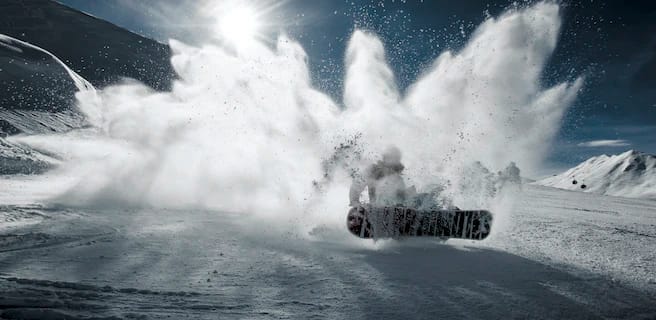
Which Challenges You More: Skiing vs. Snowboarding – Snow Rivalry Unveiled
Is skiing or snowboarding easier? Explore this in our guide comparing both, with expert insights and tips for beginners[…]
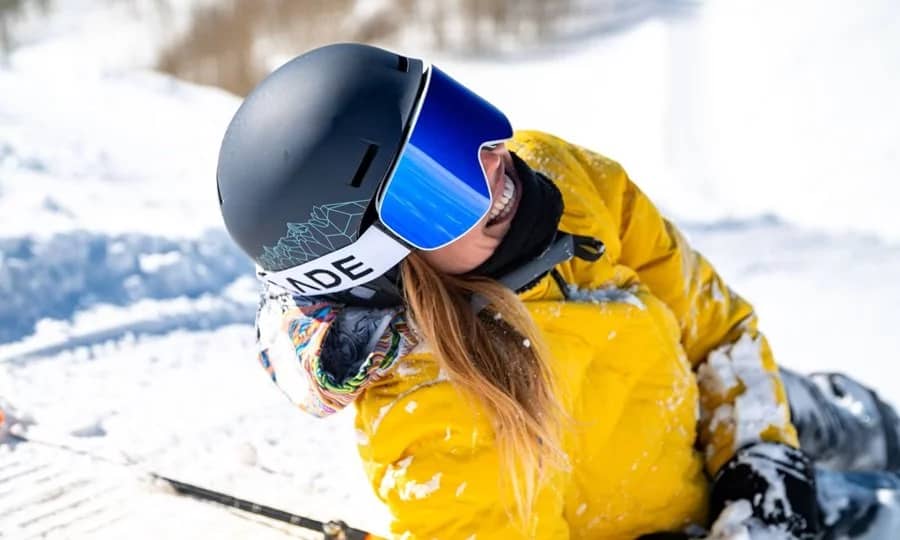
What to Wear Skiing First Time for Ultimate Comfort
Discover the essentials of what to wear skiing first time. Stay warm, dry, and safe with our comprehensive guide[…]
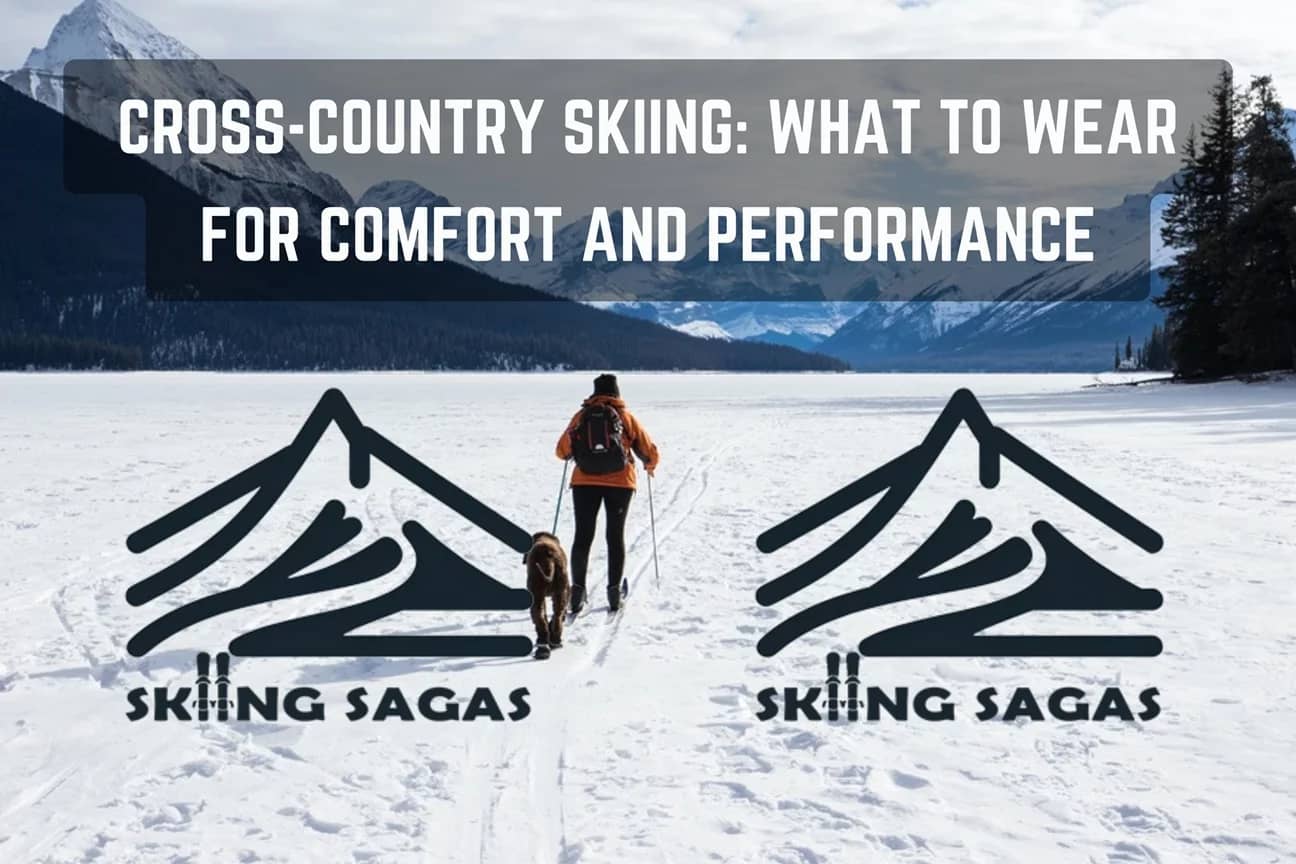
What to Wear Cross Country Skiing: Dress Right and Enjoy
Learn what to wear cross country skiing to stay warm and comfortable. Essential clothing tips for all levels of[…]
FAQ
Why are ski poles important in skiing?
Ski poles provide balance, rhythm, and maneuverability on the slopes. They also aid in maintaining proper posture and distributing weight during turns.
How do I choose the right size and type of ski poles?
Consider your height, skiing style, and terrain preferences when selecting ski poles. Measure from your armpit to the ground to determine the correct length. Choose between aluminum or carbon poles based on your desired level of durability and performance.
What is the correct grip and placement of ski poles?
Grip the ski poles firmly with your hands at shoulder width apart. Position the poles diagonally across your body with the tips pointing backward. The wrist straps should go over your hands and under the grips for added security.
What are some basic ski pole techniques for beginners?
As a beginner, focus on using your poles to initiate turns and maintain balance. Plant the poles firmly in the snow at the start of each turn and push off to create a smoother transition.
What are some advanced ski pole techniques for experienced skiers?
Experienced skiers can use ski poles for pole planting, pole timing, and mastering dynamic turns. Pole planting involves synchronizing your pole planting with your turns for added precision and control.
How can I adjust my ski pole technique for different terrains?
Adjust your pole technique based on the terrain. In moguls, use shorter and quicker pole plants to maintain rhythm. On steep slopes, use your poles for added stability. In off-piste skiing, use longer pole plants to maneuver through deep snow.
How do I sync pole usage with turns for rhythm and timing?
To achieve a smooth rhythm, time your pole plants with the initiation of each turn. This helps maintain flow and control. Practice syncing your pole usage with your body movements during turns.
How can ski poles improve my skiing performance?
Ski poles improve balance, power, and technique. They help you maintain stability, distribute weight effectively, and navigate through various terrains. Proper use of ski poles can significantly enhance your overall skiing performance.
How can I practice and refine my ski pole technique?
Practice is key to mastering ski pole technique. Start by focusing on proper grip and placement. Then, incorporate drills such as pole planting exercises and rhythm exercises while skiing. Regular practice will help refine your technique over time.
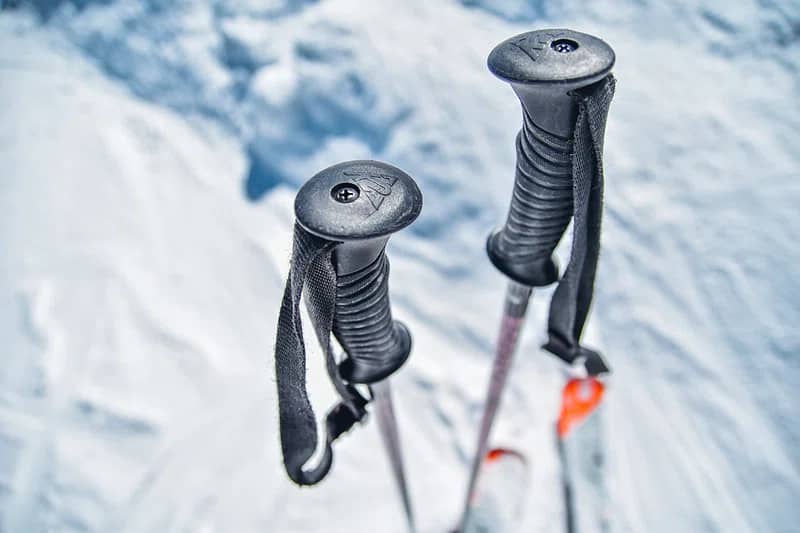
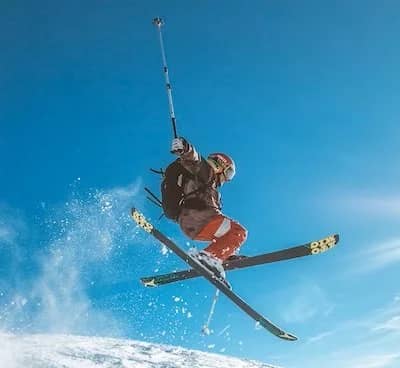

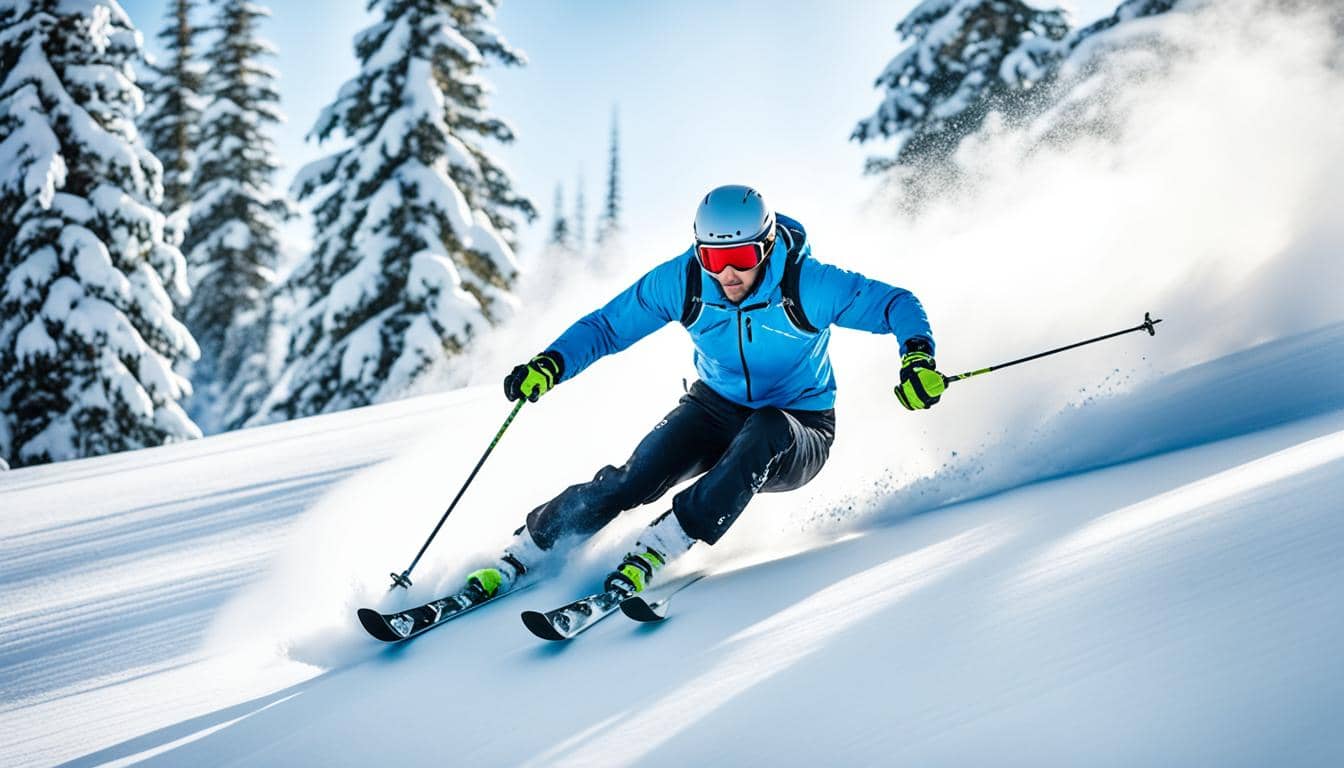




No responses yet